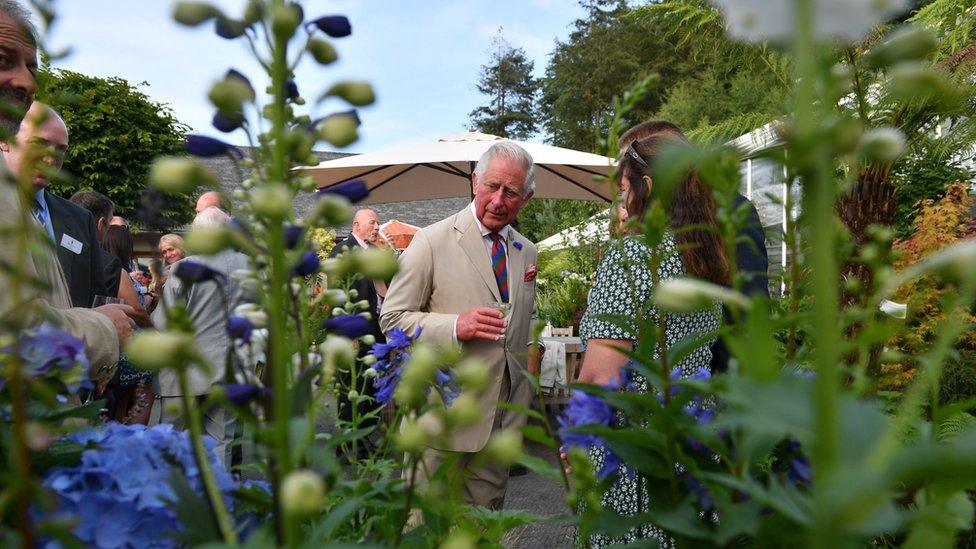Coronation: Wildflower seeds for primary schools to mark event
- Published
- comments

King Charles is known for his love of nature
More than 200,000 packets of wildflower seeds are to be sent to primary schools across the UK to mark the King's coronation on 6 May.
It's hoped children will plant the seeds to create new green areas for bees and butterflies.
It has also been announced that England's longest national trail is to be re-named the "King Charles the Third England Coast Path".
King Charles is well known for his love of flowers and nature and this is reflected in plans for the coronation.
The Department for Education (DfE) and educational charity, the Eden Project, who are the running the wildflower scheme say the seeds would create around 40 hectares of new wildflowers across England.
If planted together the seeds would produce 40 rugby pitch-sized wildflower meadows, the Department for Education said.
The Eden Project's development director Dan James said that it was important to restore biodiversity across the UK and "even small steps can make a difference".
Biodiversity is all the different kinds of life that can be found in a given area. That includes animals and plants, but also microorganisms such as bacteria.
Primary schools are being sent wildflower seeds to plant
The packets of seeds include native annual wildflower species; cornflower, corn poppy, corn chamomile, corncockle, corn marigold and catchfly which if sown this spring will bloom this summer.
The wildflowers should provide food for a wide range of insects including bees, butterflies and other pollinators in school grounds across England.
The Department for Education says each seed packet covers about two square metres of blue, white, purple, red and yellow flowers that can be planted in pots, beds or borders.
King Charles is interested in environmental issues and as Prince of Wales he often spoke out about climate change, biodiversity and conservation.
He has even co-written a children's book about climate change.
English Heritage is to plant wildflowers at historical sites like Stonehenge
Other plans to mark the coronation have also been inspired by his love of nature.
England's longest national trail which will be 2,700 miles when it is complete and will go all the way round the coast of England is to be re-named the "King Charles the Third England Coast Path".
While English Heritage, a charity which looks after historic sites, announced at the end of March that it would also be planting 100 wildflower meadows at its castles, abbeys, prehistoric stone circles and palaces to celebrate.
What are pollinators, and how do wildflowers help them?
Pollinators are insects that help plants create seeds, meaning they can keep growing year after year.
But they're in trouble in the UK and around the world - for example, the UN have said that a million species of bees, which are very hard-working pollinators, are under threat of extinction.
Both bees and butterflies pollinate lots of plants across the UK
Part of the problem is when there aren't enough areas such as meadows with wild plants that they either eat or make their homes in.
So, people have started rewilding in order to combat this.
Rewilding is all about returning land and oceans to a more natural - or wilder - state
This often means doing nothing and letting nature take over to create more biodiverse areas
Often animals or plants are introduced to an area, including species or similar species that might have lived there previously but do not any more
Chemicals, fertilisers and worming tablets are not used on the land or animals living there either
How can you get involved with rewilding?
There are lots of ways that you can help nature, even if you do not have lots of outdoor space.
If you have a garden - letting small parts of it go wild - by leaving it to grow, can provide habitats for wildlife.
Leaving old wood, fallen leaves, and other garden waste can provide brilliant homes for hedgehogs, toads, frogs and insects.
- Published23 February 2023
- Published25 July 2021
